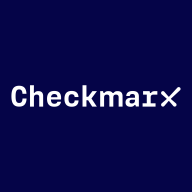


Checkmarx One and HackerOne provide security solutions in application security and vulnerability management. Customers seem more satisfied with Checkmarx One's pricing and customer service; however, HackerOne outshines in feature robustness.
Features: Checkmarx One features comprehensive application security testing, automation capabilities, and supports numerous languages and frameworks. HackerOne features a vast network of ethical hackers, a unique bug bounty platform, and insightful real-world threat assessments.
Room for Improvement: Checkmarx One could enhance its threat intelligence capabilities and expand integration options with third-party tools. Furthermore, streamlining user interfaces and reducing false positives would be beneficial. HackerOne could improve its initial deployment process, offer more detailed vulnerability reports, and provide more cost-effective plans for smaller enterprises to appeal to a broader customer base.
Ease of Deployment and Customer Service: Checkmarx One integrates seamlessly with existing development workflows and offers reliable customer support for quick implementation issue resolutions. HackerOne involves collaboration with its security community during deployment, requiring initial acclimatization; however, its customer service is enhanced due to active community involvement, offering efficient issue resolution.
Pricing and ROI: Checkmarx One is praised for its competitive pricing and solid ROI, allowing integration without hefty upfront costs. In contrast, HackerOne’s pay-per-vulnerability model may require higher initial investments but often yields valuable security insights, contributing to significant long-term savings.



| Company Size | Count |
|---|---|
| Small Business | 30 |
| Midsize Enterprise | 9 |
| Large Enterprise | 38 |
Zafran Security integrates with existing security tools to identify and mitigate vulnerabilities effectively, proving that most critical vulnerabilities are not exploitable, optimizing threat management.
Zafran Security introduces an innovative operating model for managing security threats and vulnerabilities. By leveraging the threat exposure management platform, it pinpoints and prioritizes exploitable vulnerabilities, reducing risk through immediate remediation. This platform enhances your hybrid cloud security by normalizing vulnerability signals and integrating specific IT context data, such as CVE runtime presence and internet asset reachability, into its analysis. No longer reliant on patch windows, Zafran Security allows you to manage risks actively.
What are the key features of Zafran Security?
What benefits can users expect from Zafran Security?
In industries where security is paramount, such as finance and healthcare, Zafran Security provides invaluable protection by ensuring that only exploitable vulnerabilities are addressed. It allows entities to maintain robust security measures while allocating resources efficiently, fitting seamlessly into existing security strategies.
Checkmarx One is an enterprise cloud-native application security platform focused on providing cross-tool, correlated results to help AppSec and developer teams prioritize where to focus time and resources.
Checkmarx One offers comprehensive application scanning across the SDLC:
Checkmarx One provides everything you need to secure application development from the first line of code through deployment and runtime in the cloud. With an ever-evolving set of AppSec engines, correlation and prioritization features, and AI capabilities, Checkmarx One helps consolidate expanding lists of AppSec tools and make better sense of results. Its capabilities are designed to provide an improved developer experience to build trust with development teams and ensure the success of your AppSec program investment.
HackerOne leads in offensive security with a platform that expertly identifies and remedies security vulnerabilities using AI and a vast researcher community. Trusted by industry giants, it integrates bug bounties, vulnerability disclosure, and code security in software development.
The HackerOne Platform offers a comprehensive suite of services, combining advanced AI technology with the skills of a global security researcher community to address complex security challenges. It facilitates an understanding of vulnerabilities, promoting better remediation practices across software lifecycles. Notable clients include Anthropic, Crypto.com, General Motors, GitHub, Goldman Sachs, Uber, and U.S. Department of Defense. Recognized for innovation and workplace excellence, HackerOne continues to set standards in security solutions.
What key features does HackerOne offer?HackerOne finds significant applications in various sectors with its focus on vulnerability assessment, testing, and responsible disclosure. Organizations utilize it for ethical hacking and efficient vulnerability coordination, making it essential in cybersecurity strategies. The platform's reliability is evident in its ability to identify and document security threats effectively.
We monitor all Application Security Tools reviews to prevent fraudulent reviews and keep review quality high. We do not post reviews by company employees or direct competitors. We validate each review for authenticity via cross-reference with LinkedIn, and personal follow-up with the reviewer when necessary.